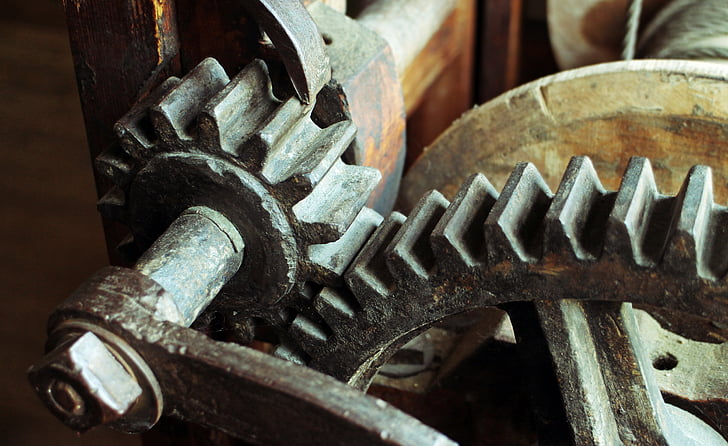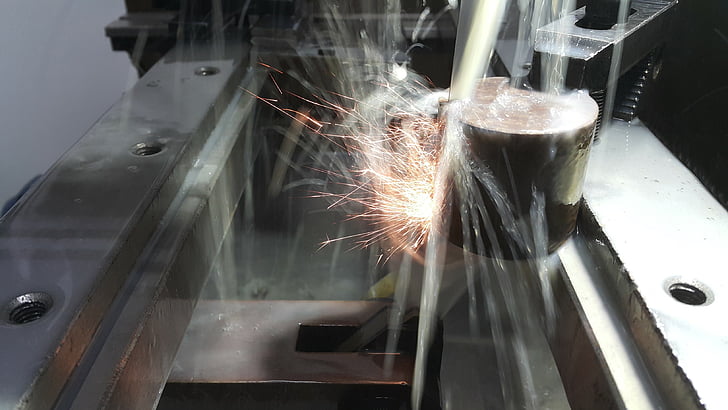Rubber products are indispensable parts of modern industry and everyday life, ranging from tires to seals to industrial piping; many fields relate to rubber products. Therefore, it is not difficult to see that an extruder is a kind of core equipment in the production of rubber products and plays a very important role. In the case of rubber processing, it is required not only to plasticize and mix the raw rubber material but also to shape the rubber product to some predetermined shape and size.
How do extruders work?
An extruder works on an interesting working principle that largely depends on the rotational action of the screw for changing raw rubber material into desired shape and size. This understanding is very essential for any improvement in extrusion processes, and also it ensures the quality of extruded products.
Fundamentally, the screw is the heart of the whole process of extrusion and is located inside a barrel. Rotation of the screw applies a shearing force to the raw rubber material, continuously advancing it along the length of the barrel. This rotation creates a sort of combined shearing and friction with compression forces applied to the raw rubber material.
During the passage through the barrel, changes take place in the raw rubber material because of mechanical action, including shearing forces by the screw causing scission of the rubber molecular chains or plasticization due to the destruction of arrangements of macromolecular chains, thus improvements in flowing and plastic properties of rubber take place.
Equally important in the process of extrusion are the compressive forces that the screw applies. The rotating screw compacts and compresses the raw rubber material, hence removing air pockets and voids and making the material more homogeneous and uniform.
Besides, the frictional forces taking place between the screw and the raw rubber material contribute to the plasticization process. The high temperature from friction degrades the rubber and makes it soft, hence malleable and easy to shape.
While in this molten state, the rubber material continues through the barrel and into the die head, where the final shaping is affected. The die head of an extruder is of major importance since it dictates the ultimate shape and size of the extruded product.
The type of product specification, material property, and production requirement influence the selection of a die head. Flat, round, and custom-shaped are some of the die heads that could be used for different geometries and dimensions of products.
As the plasticized rubber material reaches the die head, it is forced through a specially designed opening or set of openings called the die orifice. The geometry of the die orifice dictates the cross-sectional shape and dimensions of the extruded product.
The final product shape is extruded from the die head, ready to be used or further processed. Such control of the extrusion variables like screw speed, barrel temperature, and die geometry will determine the quality and accuracy of the final product.

Extruder type and selection
The selection of the right extruder has to be made given special demands imposed by various rubber products and appropriate production processes. In your product, characteristics such as form factor and size, expected production efficiency, and qualities of raw materials should play a main role in making this decision.
As illustrated from the above example, larger sizes of rubber pipes and other value-added engineered rubber products will require more powerful extruders and of higher capacity. In addition, many compound rubber products will require the use of several extruders operating concurrently-a process known as co-extrusion-in order to maintain quality and deliver performance of a higher order.
Extruder applications in Rubber Product production
Tire production: Tire is one big category of rubber products; its production process largely adopts an extruder. The whole tire-from the treads and sidewalls to the carcass-is to be completed on the extruder. By controlling temperature, pressure, screw speed, and other parameters properly, the size and properties of the tire components can meet the required standard. Furthermore, the wire rims and other components inside the tire can be made using the extruder.
Rubber hose production: Applications of rubber hoses can be seen in the transportation and sealing of fluids. During the production of the rubber hose, the extruder plasticizes raw rubber into a continuous tube. Production of various sizes, wall thicknesses, and different applications of rubber hose can be done with the adjustment of parameters in the extruder and changes of different die heads.
Seal production: Seals like O-rings and seals are very critical in any mechanical equipment. The extruder is one of the crucial tools in seal manufacturing. With adequate selection of the die head and proper adjustments of parameters of the extruder, it is quite possible to produce seals in various dimensions, morphologies, and properties. Besides this, the main usage, the extruders are used for manufacturing other kinds of rubber seals. These include oil-based types and dust covers.
Advantages of extruders in the production of rubber products
Efficiency: Compared to the traditional process of production, the capacity is higher and the cost lower. The machine itself can continuously and fast finish producing rubber products, which is of great importance to production efficiency.
Flexibility: Adjustments can be made to the parameters of an extruder according to requirements and variations in die head replacements can also be applied. More so, massive productions can realize the manufacturing of highly flexible rubbers of any shape and size in line with adapting to diversified property needs on the market demanders’ side.
Stability of quality: the advanced control system and precise mechanical structure could ensure stability in the extruder for constant quality products. Higher-quality products with precise control of temperature, pressure, and screw speed could be obtained.

Challenges of extruders in the production of rubber products
All aspects may affect the stability and preciseness in the course of the process of extrusion and will probably affect the quality of the final products. Amidst all those factors, raw material fluctuation, quality control measures, and technology updates are three determining factors for extrusion with optimal performance.
Raw Material Fluctuation
This difference in rubber as raw material is quite contrasting with batch variation, sourcing origin, and quality inconsistencies. These changes make the stability and precision of the extrusion process challenging. Thus, for minimizing such risks related to raw material variations, tight screening, and testing become very essential.
It becomes, therefore, possible to achieve any deviation in material properties early when all raw material testing is conducted at the doorstep of the extrusion operators. A proactive approach gives enough chance for timely adjustments in extrusion parameters to produce consistent quality products even with any fluctuation in raw material characteristics.
Also, the company will have a great relationship with suppliers; it will buy from reputed suppliers, reducing the possibility of wide variations in the material quality. Discussion of standards and expectations of quality with suppliers to obtain consistent and reliable feedstock for the extrusion process.
Quality Control
While extruders boast high levels of automation and intelligence, the operator’s role becomes crucial in product quality. Most of the extrusion processes, even with the highest technological capabilities, are still subject to human surveillance and interference to keep their performance within optimum limits.
Quality control effectively involves monitoring extrusion parameters, regular equipment maintenance, and routine inspections of the extruded products. Besides that, training for operators and skill development programs are necessary for enhancing quality awareness and competence in extrusion operations.
This would enable the operators to detect and get problems sorted out right then and there, reducing all possibilities of defects in the products while maintaining quality in the extrusion process.
Technology Update
The rubber industry is one of continuous change due to innovations and changes in technology, thereby changing the different extrusion equipment and techniques. With emerging new technologies and changing industrial standards, manufacturers and users will have to be agile to remain at an edge in the competitive market.
The companies will be able to keep pace with new technologies and trends to take advantage of new developments in extrusion technology that could offer improved efficiency, productivity, and quality of products. This, therefore, means that regular upgrading of equipment and investment in modern extrusion machinery could lead companies to position themselves for success in an increasingly competitive environment.
Moreover, the collaboration with equipment manufacturers and other industry experts will further help get valuable insight into emerging trends and best practices related to the rubber extrusion process. Embracing a culture of innovation and continuous improvement enables companies to stay ahead and satisfy ever-evolving customer demand due to changing market dynamics.
Conclusion: In this regard, raw material fluctuation, quality control, and technology updates are challenges that need consideration in ensuring stability and precision in the processes of rubber extrusion. With strong quality control, investment in operators’ training and development, and the adoption of newer technologies, companies can ensure quality in the processes of extrusion outcomes while remaining competitive within the changing landscape of rubber industries.
Conclusion
We can see that not only in improving the production efficiency and quality stability but also in the variety and renovation of products, the application of an extruder in producing rubber products is broad and deep. However, due to factors such as the fluctuating prices of raw materials, control of quality, and updating technologies, there is still significant meaning in learning and exploration about some new solutions. Further understanding of operating principles and application scenarios shall be based on an appropriate selection or optimization according to actual needs to give full play to the advantages of extruders in producing rubber products and promoting the sustainable development of the rubber industry.